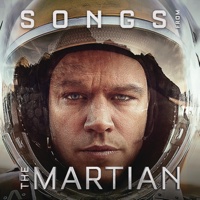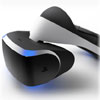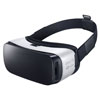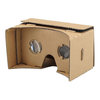Most Popular Feature Films Released In 2015
-

Star Wars: The Force Awakens (2015)
Three decades after the defeat of the Galactic Empire, a new threat arises. The First Order attempts to rule the galaxy and only a ragtag group of heroes can stop them, along with the help of the Resistance.
Storyline
30 years after the defeat of Darth Vader and the Empire, Rey, a scavenger from the planet Jakku, finds a BB-8 droid that knows the whereabouts of the long lost Luke Skywalker. Rey, as well as a rogue stormtrooper and two smugglers, are thrown into the middle of a battle between the resistance and the daunting legions of the First Order.
-

The Revenant (2015)
In the 1820s, a frontiersman named Hugh Glass sets out on a path of vengeance against those who left him for dead after a bear mauling.
Storyline
Inspired by true events, THE REVENANT captures one man's epic adventure of survival and the extraordinary power of the human spirit. In an expedition of the uncharted American wilderness, legendary explorer Hugh Glass (Leonardo DiCaprio) is brutally attacked by a bear and left for dead by members of his own hunting team. In a quest to survive, Glass endures unimaginable grief as well as the betrayal of his confidant John Fitzgerald (Tom Hardy). Guided by sheer will and the love of his family, Glass must navigate a vicious winter in a relentless pursuit to live and find redemption.
-

The Martian (2015)
During a manned mission to Mars, Astronaut Mark Watney is presumed dead after a fierce storm and left behind by his crew. But Watney has survived and finds himself stranded and alone on the hostile planet. With only meager supplies, he must draw upon his ingenuity, wit and spirit to subsist and find a way to signal to Earth that he is alive.
Storyline
During a manned mission to Mars, Astronaut Mark Watney is presumed dead after a fierce storm and left behind by his crew. But Watney has survived and finds himself stranded and alone on the hostile planet. With only meager supplies, he must draw upon his ingenuity, wit and spirit to subsist and find a way to signal to Earth that he is alive. Millions of miles away, NASA and a team of international scientists work tirelessly to bring "the Martian" home, while his crewmates concurrently plot a daring, if not impossible, rescue mission. As these stories of incredible bravery unfold, the world comes together to root for Watney's safe return.
-

Sicario
An idealistic FBI agent is enlisted by a government task force to aid in the escalating war against drugs at the border area between the U.S. and Mexico.
Storyline
When drug violence worsens on the USA Mexico border, the FBI sends an idealistic agent, Kate Macer (Emily Blunt) on a mission to eradicate a drug cartel responsible for a bomb that had killed members of her team.
-

Mad Max: Fury Road (2015)
A woman rebels against a tyrannical ruler in post apocalyptic Australia in search for her homeland with the help of a group of female prisoners, a psychotic worshiper, and a drifter named Max.
Storyline
An apocalyptic story set in the furthest reaches of our planet, in a stark desert landscape where humanity is broken, and almost everyone is crazed fighting for the necessities of life. Within this world exist two rebels on the run who just might be able to restore order. There's Max, a man of action and a man of few words, who seeks peace of mind following the loss of his wife and child in the aftermath of the chaos. And Furiosa, a woman of action and a woman who believes her path to survival may be achieved if she can make it across the desert back to her childhood homeland.
What is Virtual Reality?
Virtual Reality is an artificial environment that is created with software and presented to the user in such a way that the user suspends belief and accepts it as a real environment. On a computer, Virtual Reality is primarily experienced through two of the five senses: sight and sound.
How does Virtual Reality work?
How does Virtual Reality work? How does wearable tech make you think you're standing on Mars when you're actually about to bump into the kitchen counter? We'll be explaining how Virtual Reality headsets work here - not projections which transform whole rooms. Let's start with some basics.
The headset set-up is being used by Oculus, Sony, Samsung and Google and usually requires three things. A PC, console or smartphone to run the app or game, a headset which secures a display in front of your eyes (which could be the phone's display) and some kind of input - head tracking, controllers, hand tracking, voice, on-device buttons or trackpads.
Total immersion is what everyone making a Virtual Reality headset, game or App is aiming towards - making the virtual reality experience so real that we forget the computer, headgear and accessories and act exactly as we would in the real world. So how do we get there?
The basics
VR headsets like Oculus Rift and Project Morpheus are often referred to as HMDs and all that means is that they are head mounted displays. Even with no audio or hand tracking, holding up Google Cardboard to place your smartphone's display in front of your face can be enough to get you half-immersed in a virtual world.
The goal of the hardware is to create what appears to be a life size, 3D virtual environment without the boundaries we usually associate with TV or computer screens. So whichever way you look, the screen mounted to your face follows you. This is unlike AR which overlays graphics onto your view of the real world.
Video is sent from the console or computer to the headset via a HDMI cable in the case of headsets such as HTC's Vive and the Rift. For Google Cardboard and the Samsung Gear VR, it's already on the smartphone slotted into the headset.
VR headsets use either two feeds sent to one display or two LCD displays, one per eye. There are also lenses which are placed between your eyes and the pixels which is why the devices are often called goggles. In some instances, these can be adjusted to match the distance between your eyes which varies from person to person.
These lenses focus and reshape the picture for each eye and create a stereoscopic 3D image by angling the two 2D images to mimic how each of our two eyes views the world ever-so-slightly differently. Try closing one eye then the other to see individual objects dance about from side to side and you get the idea behind this.
The best Virtual Reality headsets
-

Oculus Rift
The Oculus Rift is a virtual reality head-mounted display headset developed by Oculus VR. It was initially proposed in a Kickstarter campaign, during which Oculus VR (at the time an independent company) raised US$2.5 million for the development of the product.
-

Sony PlayStation VR
PlayStation VR, previously known by the codename Project Morpheus, is an upcoming virtual reality headset produced by Sony Computer Entertainment. It is designed to be fully functional with the PlayStation 4 video game system. It is currently a prototype and has no confirmed release date, although Sony has scheduled its launch for the first half of 2016.
-

HTC Vive
HTC Vive is an upcoming virtual reality head-mounted display being developed in co-production between HTC and Valve Corporation. It is also part of Valve Corporation's SteamVR project.
-

Samsung Gear VR
Samsung Gear VR is a mobile virtual reality device developed by Samsung Electronics in collaboration with Oculus VR. A compatible Samsung Galaxy device (Galaxy Note 5 or Galaxy S6/S6 Edge), sold separately, acts as the headset's display and processor, while the Gear VR unit itself contains the high field of view lenses as well as a custom IMU for rotational tracking which connects to the smartphone via micro-USB.
-

Microsoft HoloLens
The premier device for Windows Holographic, Microsoft HoloLens is a smart-glasses headset that is a cordless, self-contained Windows 10 computer. It uses advanced sensors, a high-definition stereoscopic 3D optical head-mounted display, and spatial sound to allow for augmented reality applications, with a natural user interface that the user interacts with through gaze, voice, and hand gestures.
-

Google Cardboard
Google Cardboard is a virtual reality (VR) platform developed by Google for use with a fold-out cardboard mount for a mobile phone. It is intended as a low-cost system to encourage interest and development in VR and VR applications.




